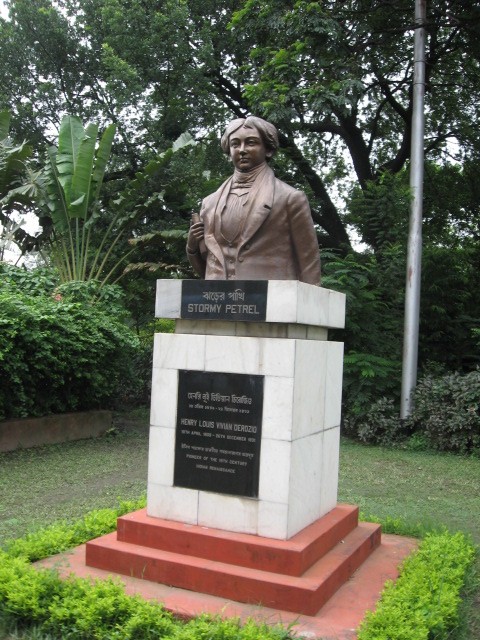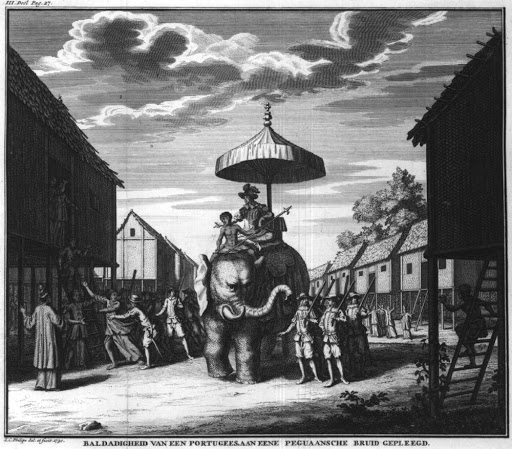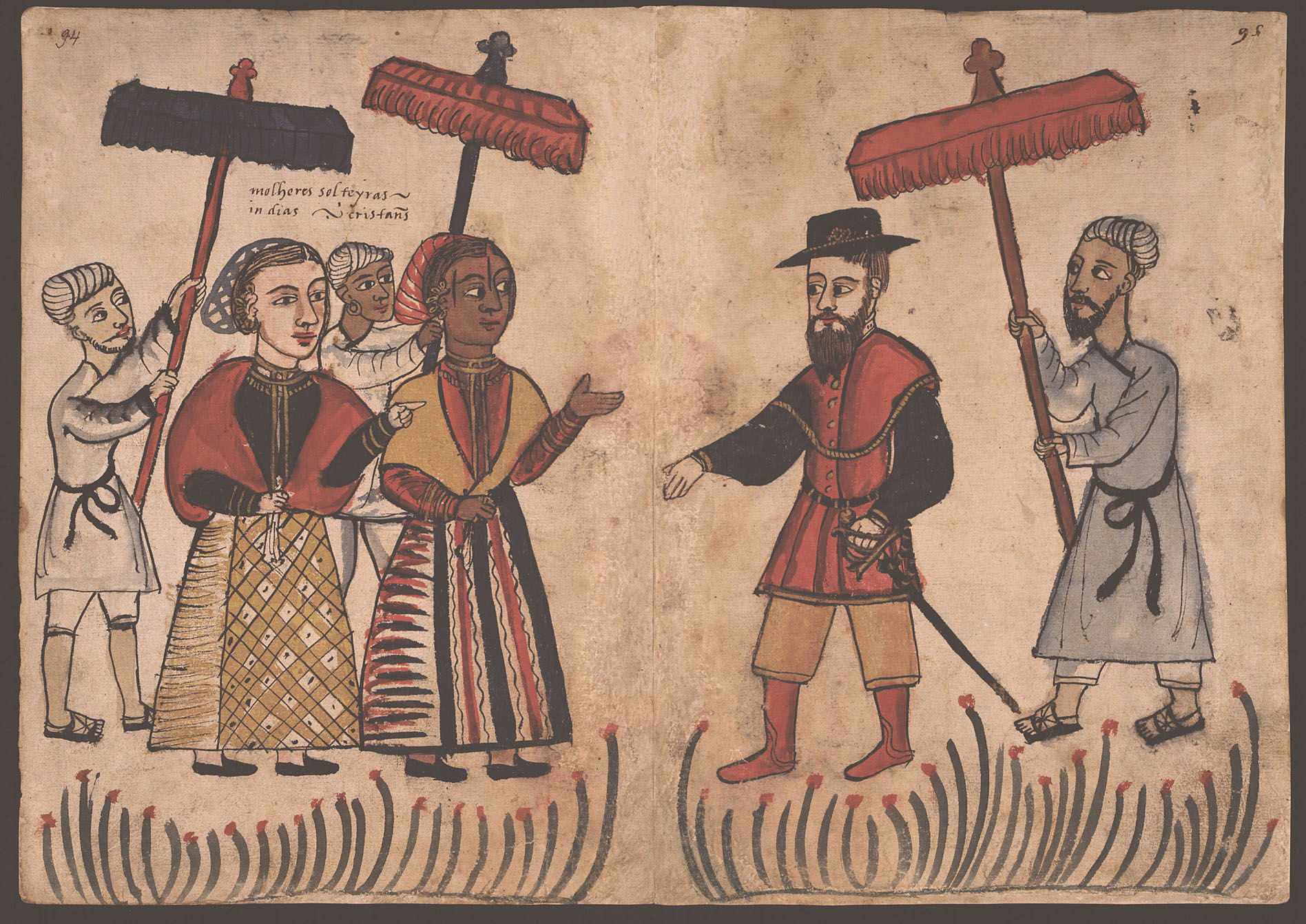|
Luso-Indians
Luso-Indians, or Portuguese-Indians, are people who have mixed Indian people, Indian and Portuguese people, Portuguese ancestry; the term also refers to people of Portuguese descent born or living or originating in former Portuguese Indian colonies, the most important of which were Goa and Damaon of the Konkan region, along the Western coast of the present-day India, Republic of India. Luso-Indians are one subgroup of Luso-Asians, which includes other Eurasian creole peoples. Their diaspora can be found around the world, particularly in the Anglosphere and the Lusosphere, including constiuents of the former Portuguese East Indies such as Macao. Pockets of Luso-Indians used to live in the parts of India now known as Anjediva, Velha Goa, Damaon, Dio district, St Mary's islands of Mangalore, Bombay (Mumbai), Korlai Fort (Chaul), Vasai (Bassein), Silvassa, Cape Comorin & Fort Cochin. There are also a number of Koli Christians, Christian Brahmins, Christian Cxatrias & so on with Po ... [...More Info...] [...Related Items...] OR: [Wikipedia] [Google] [Baidu] |
Luso-Asians
Luso-Asians (Portuguese: ''luso-asiáticos'') are Eurasian people whose ethnicity is partially or wholly Portuguese people, Portuguese and ancestrally are based in or hail primarily from Portugal, South Asia, Southeast Asia, and East Asia. They historically came under the cultural and multi-ethnic sway of the Portuguese Empire in Portuguese East Indies, the East and retain certain aspects of the Portuguese language, Roman Catholic faith, and Romanization (cultural), Latin cultural practices, including internal and external architecture, art, and cuisine that reflect this contact. The term ''Luso'' comes from the Roman Empire's province of Lusitania, which roughly corresponds to modern Portugal. Luso-Asian Art is also known as Indo-Portuguese Art (from India), Luso-Ceylonese Art (from Sri Lanka), Luso-Siamese Art (from Thailand), Luso-Malay (from Indonesia, Malaysia and Singapore), Sino-Portuguese Art (from China), or Nipo-Portuguese Art (from Japan). Examples of this art, especia ... [...More Info...] [...Related Items...] OR: [Wikipedia] [Google] [Baidu] |
Bayingyi People
Bayingyi people () also known as Luso-Burmese, are a subgroup ethnicity of Luso-Asians, and are the descendants of Portuguese people, Portuguese mercenaries or adventurers who came to Myanmar (Burma) in the 16th and 17th centuries. They were recruited into the Royal Burmese armed forces, Royal Burmese Armed Forces' artillery and musketeers corps, and over centuries of continued settlement in the Mu River, Mu Valley, particularly the Sagaing Region of Myanmar, have been more or less Cultural assimilation, assimilated into the dominant ethnic group of the region, the Bamar people, Bamar, while keeping their sense of Portuguese identity and Catholic Church in Myanmar, Roman Catholic religion. Etymology The descendants of the Portuguese were once commonly known, because of their Caucasian race, Caucasian features, as “Bayingyi", but the everyday usage of the term, along with the Bayingyi's Europe, European appearance, has almost disappeared due to assimilation with the Bamar people ... [...More Info...] [...Related Items...] OR: [Wikipedia] [Google] [Baidu] |
Goan Catholics
Goan Catholics () are an Ethnoreligious group, ethno-religious community adhering to the Latin Church, Latin Rite of the Catholic Church from the Goa state, in the southern part of the Konkan region along the west coast of India. They are Konkani people and speak the Konkani language. Christianisation of Goa, Missionary activities followed soon after the Portuguese conquest of Goa. Pope Nicholas V had enacted the Papal bull of ''Romanus Pontifex'' in AD 1455, according to which the Padroado, patronage of the Christian faith in the East Indies, was granted to the Portuguese crown. Their culture is an amalgam of Konkani language, Konkani and Culture of Portugal, Portuguese cultures, with the latter having a more important role because Goa, Damaon & Diu had been ruled by Portugal from AD 1510–1961. The notion of Goa Special Status, Goan identity as a distinct culture among other Luso-Asians or Luso-Indian cultures was forged into India after the annexation of Goa and Damaon in 1 ... [...More Info...] [...Related Items...] OR: [Wikipedia] [Google] [Baidu] |
Indo-Portuguese Creoles
Indo-Portuguese creoles are the several Portuguese creoles spoken in the erstwhile Portuguese Indian settlements, Cochin Portuguese Creole, Fort Bassein, Goa and Damaon, Portuguese Ceylon etc; in present-day India and Sri Lanka. These creoles are now mostly extinct or endangered. They have substantial European Portuguese words in their grammars or lexicons: * Ceylon Portuguese creole ''(Sri Lanka)'' * Damaon and Dio Portuguese creole * Kristi language ( Chaul Portuguese creole) * Norteiro creole (Bassein) † * Bombay Portuguese creole † * Goa Portuguese creole † * Korlai Portuguese * Cochin Portuguese creole † * Cannanore Portuguese creole * Bengali Portuguese creole † The expression Indo-Portuguese may refer not only to the creoles but also to the creole people groups of Luso-Indians and Portuguese Burghers, who spoke them on the Indian subcontinent The Indian subcontinent is a physiographic region of Asia below the Himalayas which projects into th ... [...More Info...] [...Related Items...] OR: [Wikipedia] [Google] [Baidu] |
Kolkata Derozio Statue
Kolkata, also known as Calcutta (List of renamed places in India#West Bengal, its official name until 2001), is the capital and largest city of the Indian States and union territories of India, state of West Bengal. It lies on the eastern bank of the Hooghly River, west of the border with Bangladesh. It is the primary Financial centre, financial and Commercial area, commercial centre of Eastern India, eastern and Northeast India, northeastern India. Kolkata is the list of cities in India by population, seventh most populous city in India with an estimated city proper population of 4.5 million (0.45 crore) while its metropolitan region Kolkata Metropolitan Area is the List of million-plus agglomerations in India, third most populous metropolitan region of India with a metro population of over 15 million (1.5 crore). Kolkata is regarded by many sources as the cultural capital of India and a historically and culturally significant city in the historic Bengal, region of ... [...More Info...] [...Related Items...] OR: [Wikipedia] [Google] [Baidu] |
Malayalam
Malayalam (; , ) is a Dravidian languages, Dravidian language spoken in the Indian state of Kerala and the union territories of Lakshadweep and Puducherry (union territory), Puducherry (Mahé district) by the Malayali people. It is one of 22 Languages with official status in India, scheduled languages of India. Malayalam was designated a "Classical Languages of India, Classical Language of India" in 2013. Malayalam has official language status in Kerala, Lakshadweep and Puducherry (Mahé, Puducherry, Mahé), and is also the primary spoken language of Lakshadweep. Malayalam is spoken by 35.6 million people in India. Malayalam is also spoken by linguistic minorities in the neighbouring states; with a significant number of speakers in the Kodagu and Dakshina Kannada districts of Karnataka, and Kanyakumari district, Kanyakumari, Coimbatore district, Coimbatore and Nilgiris district, Nilgiris district of Tamil Nadu. It is also spoken by the Malayali diaspora, Malayali Diaspora wo ... [...More Info...] [...Related Items...] OR: [Wikipedia] [Google] [Baidu] |
Anglo-Burmese People
The Anglo-Burmese people, also known as the Anglo-Burmans, are a community of Eurasians of Burmese and European descent; they emerged as a distinct community through mixed relationships (sometimes permanent, sometimes temporary) between the British and other Europeans with Burmese people from 1826 until 1948 when Myanmar gained its independence from the British Empire. Those who could not adjust to the new way of life after independence and the ushering in of military dictatorship are dispersed throughout the world. The term "Anglo-Burmese" is also used to refer to Eurasians of European and other Burmese ethnic minority groups (e.g. Karen, Mon, Shan, and Sino-Burmese etc.) descent. It also, after 1937, included Anglo-Indian residents in Myanmar. Collectively, in the Burmese language, Eurasians are specifically known as ''bo kabya''; the term ''kabya'' refers to persons of mixed ancestry or dual ethnicity. History Earliest settlement The first "Euro-Burmese" community eme ... [...More Info...] [...Related Items...] OR: [Wikipedia] [Google] [Baidu] |
Anglo-Indian People
Anglo-Indian people are a distinct minority community of mixed-race British and Indian ancestry. During the colonial period, their ancestry was defined as British paternal and Indian maternal heritage; post-independence, "Anglo-Indian" has also encompassed other European and Indian ancestries. Anglo-Indians' first language is usually English. Prior to 1911, various designations like "Eurasian" or "Indo-Briton" were used to describe this community. The All India Anglo-Indian Association, founded in 1926, has long represented the interests of this ethnic group; it holds that Anglo-Indians are unique in that they are Christians, speak English as their mother tongue, and have a historical link to both the British Isles and the Indian sub-continent. During the period of British rule in India, children born to unions between British fathers and Indian mothers from the 17th century onwards formed the basis of the Anglo-Indian community. This new ethnic group formed a small ye ... [...More Info...] [...Related Items...] OR: [Wikipedia] [Google] [Baidu] |
Portuguese Burghers
The Portuguese Burghers are an ethnic group in Sri Lanka, of mixed Portuguese and Sri Lankan descent. They are largely Catholic and some still speak the Sri Lanka Indo-Portuguese language, a creole based on Portuguese mixed with Sinhalese. In modern times, English has become the common language while Sinhalese is taught in school as a second language. Portuguese Burghers sometimes mixed with but are to be distinguished from other Burgher people, such as Dutch Burghers. Origins The Portuguese Burghers are largely descendants of the Sri Lanka Mestiços, the people of mixed Portuguese and Sri Lankan descent (commonly of a Portuguese father and a Sri Lankan mother) who appeared in the 16th century, after the Portuguese explorers found the sea route to the Indian Ocean. When the Dutch took over coastal Sri Lanka (formerly Ceylon), the descendants of the Portuguese took refuge in the central hills of Kandyan Kingdom under Sinhalese rule. In time, the Dutch and Portuguese desce ... [...More Info...] [...Related Items...] OR: [Wikipedia] [Google] [Baidu] |
Hinduism
Hinduism () is an Hypernymy and hyponymy, umbrella term for a range of Indian religions, Indian List of religions and spiritual traditions#Indian religions, religious and spiritual traditions (Sampradaya, ''sampradaya''s) that are unified by adherence to the concept of ''dharma'', a Ṛta, cosmic order maintained by its followers through rituals and righteous living, as expounded in the Vedas. The word ''Hindu'' is an exonym, and while Hinduism has been called the oldest religion in the world, it has also been described by the modern term ''Sanātana Dharma'' () emphasizing its eternal nature. ''Vaidika Dharma'' () and ''Arya dharma'' are historical endonyms for Hinduism. Hinduism entails diverse systems of thought, marked by a range of shared Glossary of Hinduism terms, concepts that discuss God in Hinduism, theology, Hindu mythology, mythology, among other topics in Hindu texts, textual sources. Hindu texts have been classified into Śruti () and Smṛti (). The major Hin ... [...More Info...] [...Related Items...] OR: [Wikipedia] [Google] [Baidu] |
Roman Catholicism
The Catholic Church (), also known as the Roman Catholic Church, is the List of Christian denominations by number of members, largest Christian church, with 1.27 to 1.41 billion baptized Catholics Catholic Church by country, worldwide as of 2025. It is among the world's oldest and largest international institutions and has played a prominent role in the history and development of Western civilization.Gerald O'Collins, O'Collins, p. v (preface). The church consists of 24 Catholic particular churches and liturgical rites#Churches, ''sui iuris'' (autonomous) churches, including the Latin Church and 23 Eastern Catholic Churches, which comprise almost 3,500 dioceses and Eparchy, eparchies List of Catholic dioceses (structured view), around the world, each overseen by one or more Bishops in the Catholic Church, bishops. The pope, who is the bishop of Rome, is the Papal supremacy, chief pastor of the church. The core beliefs of Catholicism are found in the Nicene Creed. The ... [...More Info...] [...Related Items...] OR: [Wikipedia] [Google] [Baidu] |
Languages Of India
Languages of India belong to several list of language families, language families, the major ones being the Indo-Aryan languages spoken by 78.05% of Indian people, Indians and the Dravidian languages spoken by 19.64% of Indians; both families together are sometimes known as languages of South Asia, Indic languages. Languages spoken by the remaining 2.31% of the population belong to the Austroasiatic languages, Austroasiatic, Sino-Tibetan languages, Sino–Tibetan, Kra–Dai languages, Tai–Kadai, Andamanese languages, Andamanese, and a few other minor language families and language isolate, isolates. According to the People's Linguistic Survey of India, India has the Number of languages by country, second highest number of languages (780), after Papua New Guinea (Languages of Papua New Guinea, 840). ''Ethnologue'' lists a lower number of 456. Article 343 of the Constitution of India stated that the official language of the Union is Hindi in Devanagari script, with officia ... [...More Info...] [...Related Items...] OR: [Wikipedia] [Google] [Baidu] |






